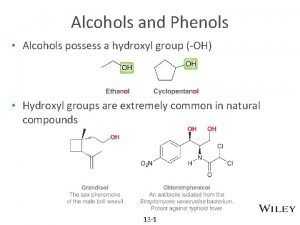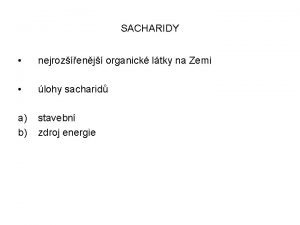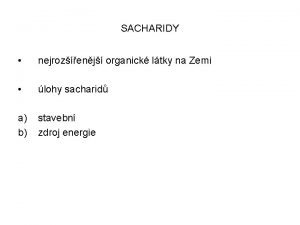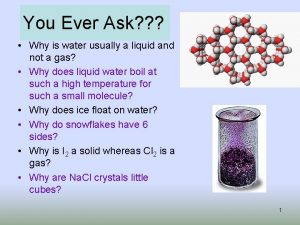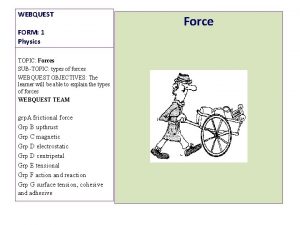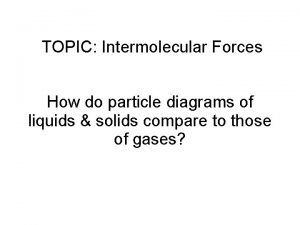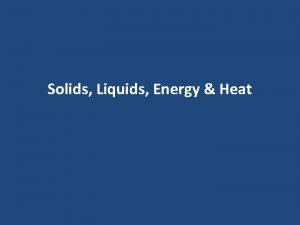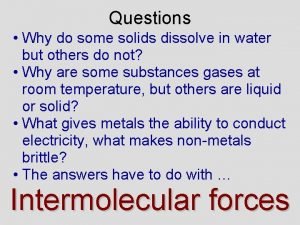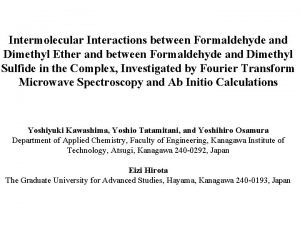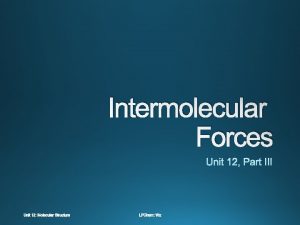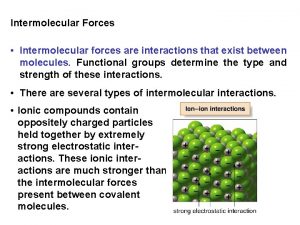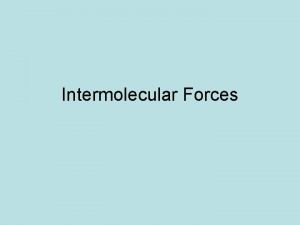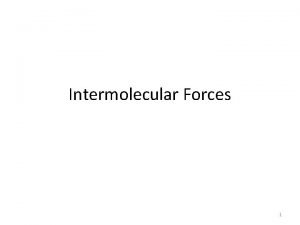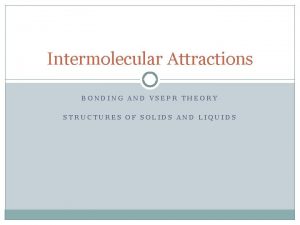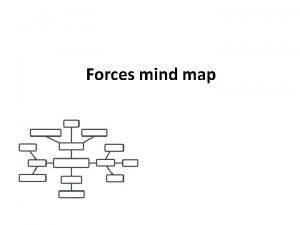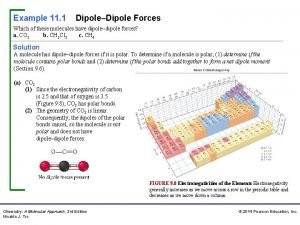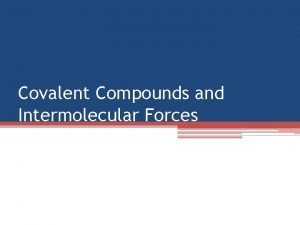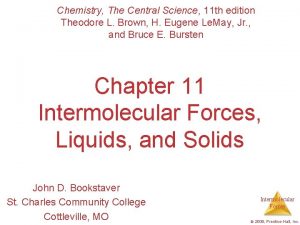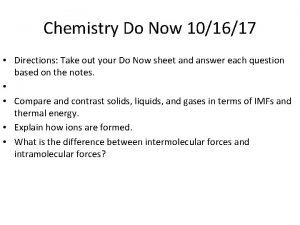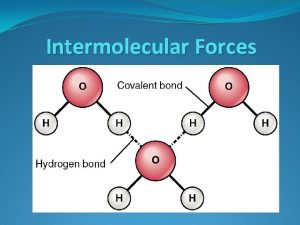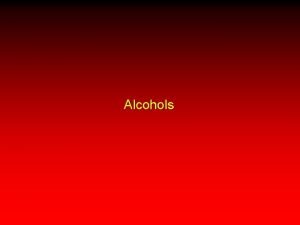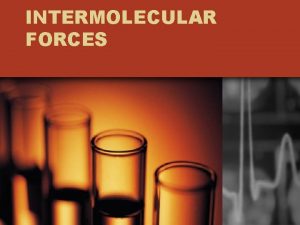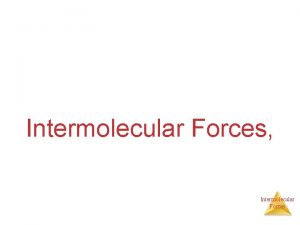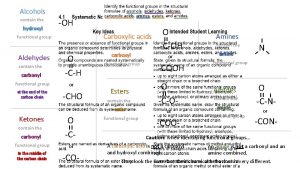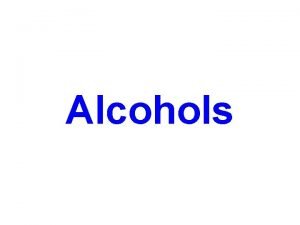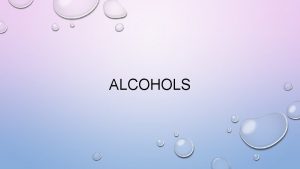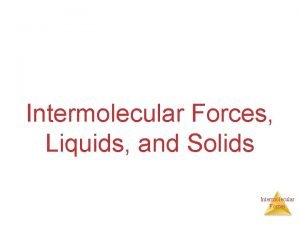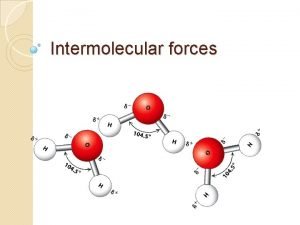Alcohols Contain a hydroxyl OH group Intermolecular forces
































- Slides: 32

Alcohols • Contain a hydroxyl (-OH) group − + • Intermolecular forces: dipole-dipole, H-bonding • H-bonds between alcohol molecules: high boiling points • H-bonds with water: up to 4 -carbon alcohols soluble in water • -OH group can act as a weak base or a weak acid + Strong base alkoxide alcohol oxonium ion

Alcohol Nomenclature • Parent chain = longest chain containing C with -OH • Root name: replace –e with –ol • ethane ethanol, butene butenol, etc. • Give –OH the smallest possible number • –OH has priority over double bonds, alkyl groups • Two –OH groups -diol; three –OH groups -triol – Add to end of root name (propane propanediol) 5 -methyl-3 -hexanol 1, 2 -ethanediol (ethylene glycol) antifreeze

Alcohol Naming Practice 2 -propanol (isopropyl alcohol) 3, 5 -dimethyl-2, 4 -heptanediol 2, 4 -dimethyl-3 -pentanol 4 -penten-2 -ol

Classes of Alcohols 1 -butanol Primary (1°) alcohol OH C attached to 1 other C Secondary (2°) alcohol OH C attached to 2 other C’s 4 -phenyl-2 -hexanol Tertiary (3°) alcohol OH C attached to 3 other C’s 1 -methylcyclohexanol

Reactions of Alcohols Strong base • Reaction with strong bases alkoxide – alcohol as proton donor (weak acid) Strong acid • Reaction with strong acids – alcohol as proton acceptor (weak base) • Dehydration oxonium ion H+ - H 2 O – reverse of hydration of alkenes – requires H+ catalyst • Oxidation – increase # of C-O bonds alkene oxidizing agent or aldehyde ketone

Dehydration Mechanism Step 1: electrophilic H+ catalyst attacks nucleophilic O atom Step 2: H 2 O dissociates, leaving behind a carbocation + H 2 O Step 3: Electrons from neighboring C-H bond form bond, regenerating H+ catalyst +

Hydration and Dehydration H+ + H 2 O Hydration and dehydration are in equilibrium Can change [H 2 O] to favor one reaction or the other Change Favors Increase [H 2 O] Formation of Alcohol (hydration) Decrease [H 2 O] Formation of Alkene (dehydration)

Possible Dehydration Products H+ ? Major product Least H’s on double bond The most-substituted alkene product is favored (most stable)

Oxidation of Alcohols • Oxidation: increases oxidation number – More C-O bonds (add O) or increases bond order – Fewer C-H bonds (remove H) • Needs an oxidizing agent – Cr. O 3, Cr 2 O 72 -, Mn. O 4 -, or PCC (pyridinium chlorochromate) PCC stops at aldehyde 1° alcohol +1 0 -1 -2 -2 +1 +1 oxidizing agent -2 +1 0 +1 aldehyde Cr. O 3 (Cr 6+) oxidizing agent Cr 3+ +3 0 -2 +1 carboxylic acid

Breathalyzer Tests oxidized ethanol + Cr 6+ oxidized ethanal ethanoic acid (acetaldehyde) (acetic acid) + Cr 3+

Breathalyzer Tests oxidized ethanol + Cr 6+ oxidized ethanal ethanoic acid (acetaldehyde) (acetic acid) + Cr 3+ oxidized methanol oxidized methanal methanoic acid (formaldehyde) (formic acid)

Oxidation of Alcohols 0 2° alcohol 0 -2 +1 0 +1 -2 oxidizing agent +2 0 0 ketone propanone 2 -propanol (acetone) 3° alcohol oxidizing agent No reaction

Naming aldehydes and ketones Parent chain = longest chain containing C=O (carbonyl) Aldehyde Ketone oxo Prefix –e becomes –al –e becomes –one Suffix Numbering C=O is always C #1 C=O is lowest possible number (don’t have to number it) (must number it) Naming Priority: Aldehydes > Ketones > Alcohols -OH (alcohol) substituent → “hydroxy” 3 -hydroxy-4 -methylpentanal 3 -chloro-2 -butanone

Naming Practice propanedial 2, 4 -pentanedione Aldehyde has priority Has both an aldehyde and a ketone Ketone = oxo 3 -oxopentanal

Condensation of Alcohols Condensation reaction: two molecules combine to form a larger molecule (+ water) – Catalyzed by acid (H+) CH 3−OH + H-O−CH 3 alcohol + alcohol H 2 SO 4 catalyst CH 3−O−CH 3 + H 2 O ether + water

Ethers − water H-bond acceptor No H-bond donor alcohol Two alkyl groups (C’s) bound to oxygen • Intermolecular forces: – Dipole-dipole – No H-bonding between ether molecules • Lower boiling point than alcohols – Water or alcohols can H-bond to ether oxygen • Somewhat soluble in water and other polar solvents

Naming Ethers • Common names: name both R groups, add “ether” ethyl diethyl ether (anesthetic)

Naming Ethers • Common names: name both R groups, add “ether” ethyl diethyl ether (anesthetic) tert-butyl methyl ether (used as gasoline additive) tert-butyl methyl propyl people ether propyl ♫ “one-eyed, one-horned, flying. . . ” ♪

Reactions of Ethers • Formation of peroxides + peroxide O 2 diisopropyl ether • Reactions of peroxides: Explosive! diisopropyl ether peroxide Controlled detonation Resulting crater: 3 feet wide, one foot deep

Aldehydes and Ketones 120° aldehyde C and O both sp 2 hybridized 120° ketone • C=O group called a carbonyl group − Very polar C=O bond • Higher boiling point than alkanes + H-bond acceptor • Soluble in polar solvents No H-bond donor • Lower boiling point than alcohols

Structural Isomers • Draw all the possible structural isomers for the following formulas: C 4 H 10 O C 5 H 12 O C 4 H 8 O C 5 H 10 O Alcohols and Ethers Aldehydes and Ketones (contain a double bond) Notice that all formulas contain one oxygen What functional groups do you know that contain one oxygen? Does the atom ratio of carbon to hydrogen make a difference?

C 4 H 10 O Isomers 1 -butanol 2 -methyl-2 -propanol diethyl ether 2 -methyl-1 -propanol methyl propyl ether isopropyl methyl ether

C 5 H 12 O Isomers 1 -pentanol 2 -methyl-1 -butanol 2 -pentanol 3 -methyl-2 -butanol 2 -methyl-2 -butanol 3 -pentanol 3 -methyl-1 -butanol 2, 2 -dimethyl-1 -propanol

C 5 H 12 O Isomers butyl methyl ether isobutyl methyl ether tert-butyl methyl ether sec-butyl methyl ether ethyl propyl ether ethyl isopropyl ether

C 4 H 8 O Isomers butanal 2 -butanone 2 -methylpropanal

C 5 H 10 O Isomers pentanal 3 -methylbutanal 2, 2 -dimethylpropanal 2 -pentanone 3 -methyl-2 -butanone 2 -methylbutanal

Reactions of Aldehydes and Ketones • Oxidation of aldehydes to carboxylic acids – Cr. O 3, Mn. O 4 - • Reduction of aldehydes and ketones to alcohols – Decrease C-O bonds, increase C-H bonds – Reducing agents: Li. Al. H 4, Na. BH 4, H 2/Pt Li. Al. H 4 propanal 1 -propanol CH 3−CH 2−OH CH 3−CH 2−CHO Na. BH 4 2 -methyl-3 -pentanone 2 -methyl-3 -pentanol

Reduction of Aldehydes/Ketones Li. Al. H 4 3 -oxopentanal 1, 3 -pentanediol Na. BH 4 cyclohexanol cyclohexanone H 2/Pt pentanedial 1, 5 -pentanediol

Carboxylic Acid Nomenclature • Parent chain: longest containing carboxyl group (COOH) • Name of parent: replace “–e” with “–oic acid” • Numbering starts at carboxyl carbon – Priority: Carboxylic acid > aldehydes > ketones > alcohols “hydroxy” “oxo” substituents 3 -oxobutanoic acid (diabetes) propanedioic acid (apples) trans-3 -methyl-2 -hexenoic acid (human armpits)

aspirin Tylenol Can irritate your stomach Gentle on the stomach A carboxylic acid Just an alcohol

Carboxylic Acid Reactions • Reduction to 1° alcohols – Only Li. Al. H 4 reduces carboxylic acids (not Na. BH 4 or H 2/Pt) butanoic acid Li. Al. H 4 1 -butanol Na. BH 4 or H 2/Pt NO RXN Reactant remains unchanged

What are the products? 3 -oxo-4 -pentenoic acid H 2/Pt Na. BH 4 Li. Al. H 4 3 -hydroxypentanoic acid 3 -hydroxy-4 -pentenoic acid 4 -pentene-1, 3 -diol
 Alcohol and hbr
Alcohol and hbr Intramolecular forces vs intermolecular forces
Intramolecular forces vs intermolecular forces Similarities of intermolecular and intramolecular forces
Similarities of intermolecular and intramolecular forces Intermolecular force of attraction
Intermolecular force of attraction Poloacetalový hydroxyl
Poloacetalový hydroxyl Aldopentóza
Aldopentóza để cm glucozo có nhiều nhóm hydroxyl
để cm glucozo có nhiều nhóm hydroxyl Ch2cl intermolecular forces
Ch2cl intermolecular forces Force and motion webquest
Force and motion webquest Imf
Imf 3 types of intermolecular forces
3 types of intermolecular forces Imf chem
Imf chem Factors affecting solvation
Factors affecting solvation Intermolecular forces present in hbr
Intermolecular forces present in hbr Phthatic
Phthatic Intermolecular forces
Intermolecular forces Intermolecular forces symbol
Intermolecular forces symbol Intermolecular forces
Intermolecular forces Intermolecular forces strength
Intermolecular forces strength 3 types of intermolecular forces
3 types of intermolecular forces Intermolecular and intramolecular forces
Intermolecular and intramolecular forces Strongest to weakest intermolecular forces
Strongest to weakest intermolecular forces Gecko feet facts
Gecko feet facts London dispersion forces diagram
London dispersion forces diagram Ionic forces of attraction
Ionic forces of attraction Similarities of intermolecular and intramolecular forces
Similarities of intermolecular and intramolecular forces Type of intermolecular forces
Type of intermolecular forces Intermolecular forces hydrogen bonding
Intermolecular forces hydrogen bonding Forces mindmap
Forces mindmap Ch2cl intermolecular forces
Ch2cl intermolecular forces Coh2 intermolecular forces
Coh2 intermolecular forces Viscosity and intermolecular forces
Viscosity and intermolecular forces Capillary action and intermolecular forces
Capillary action and intermolecular forces
